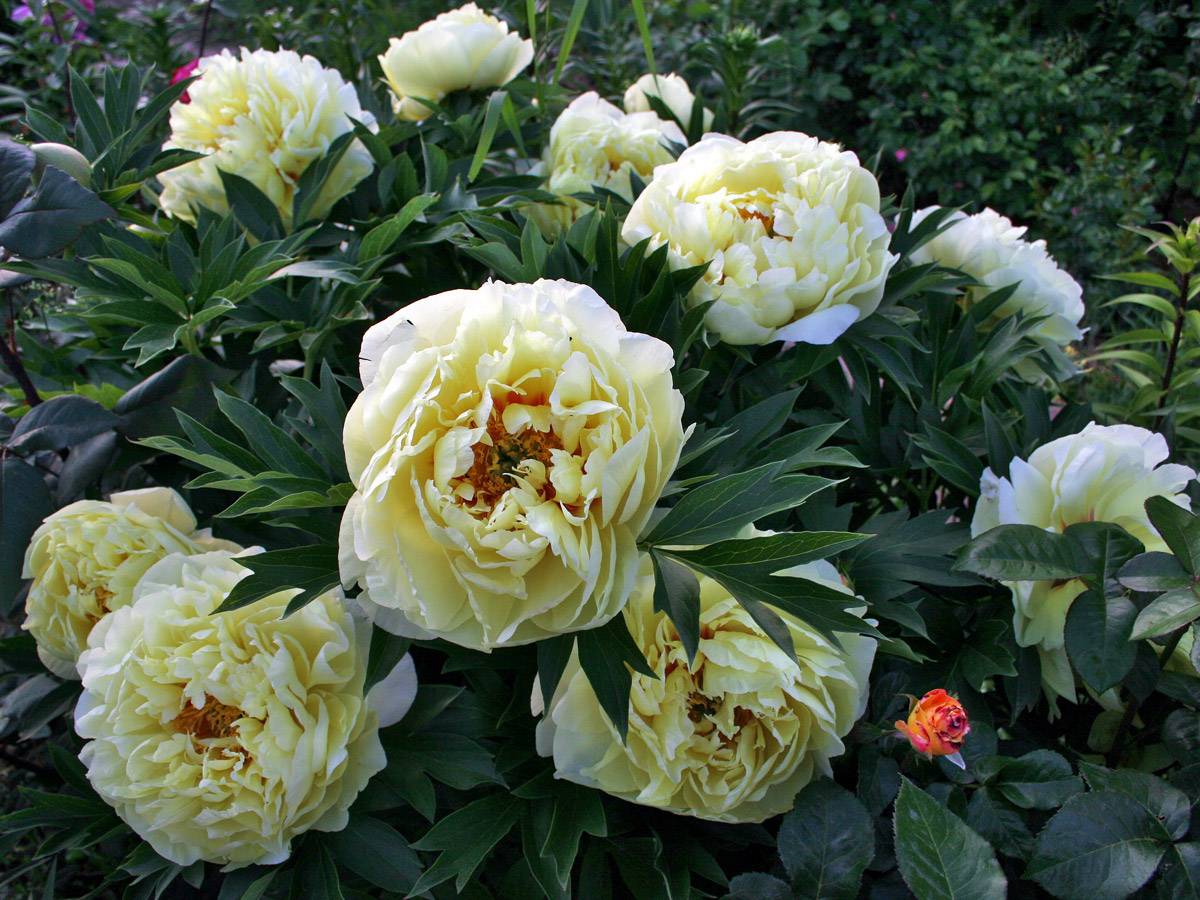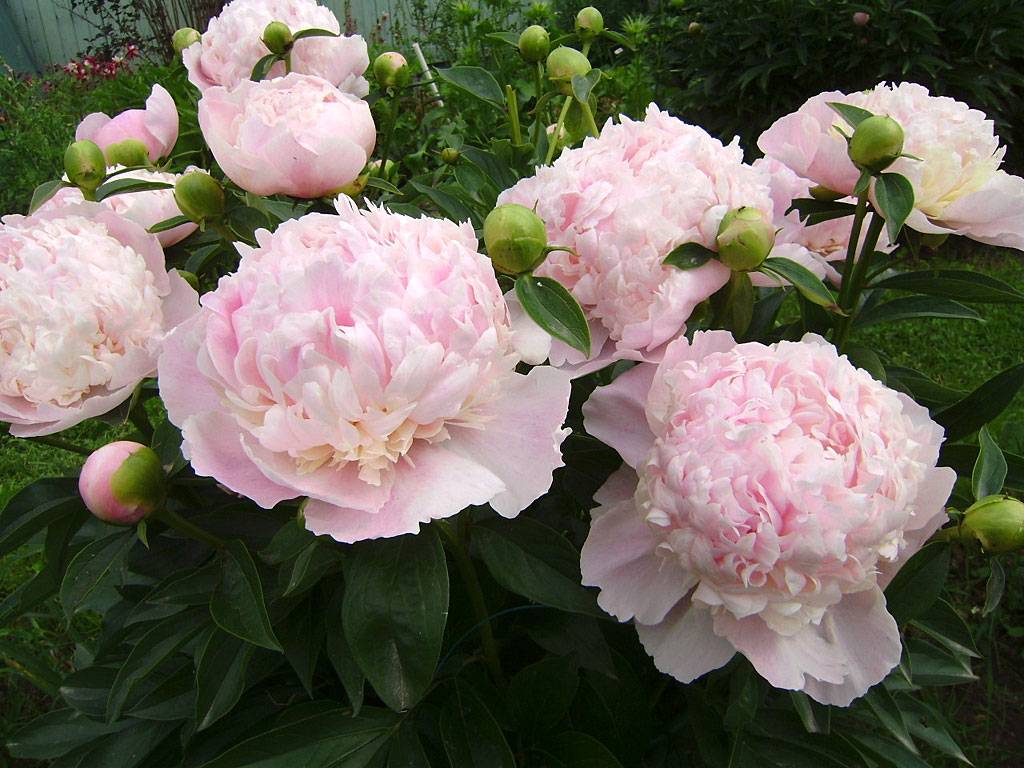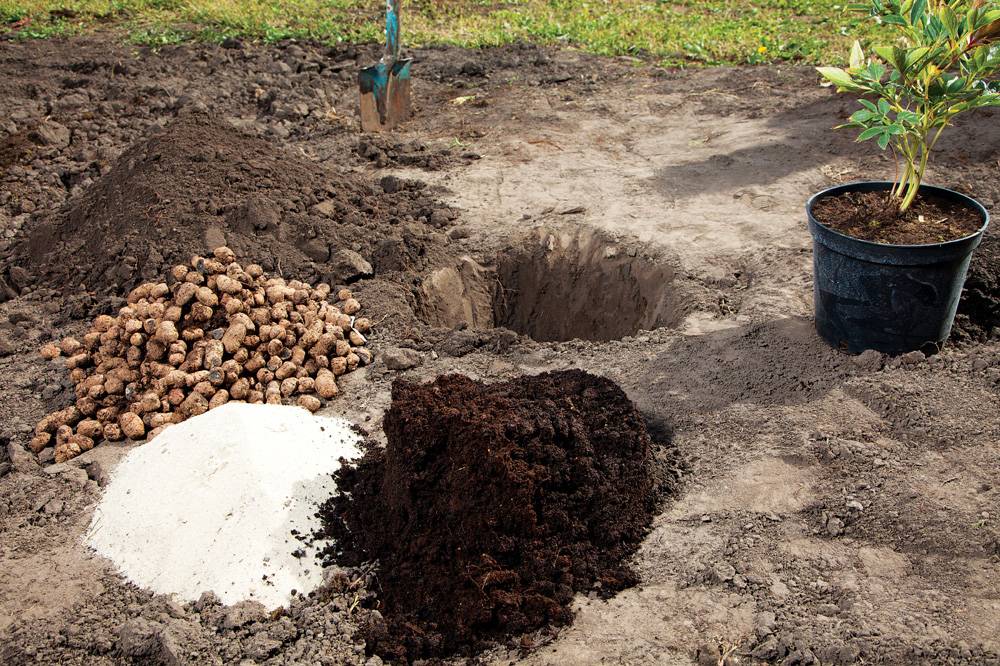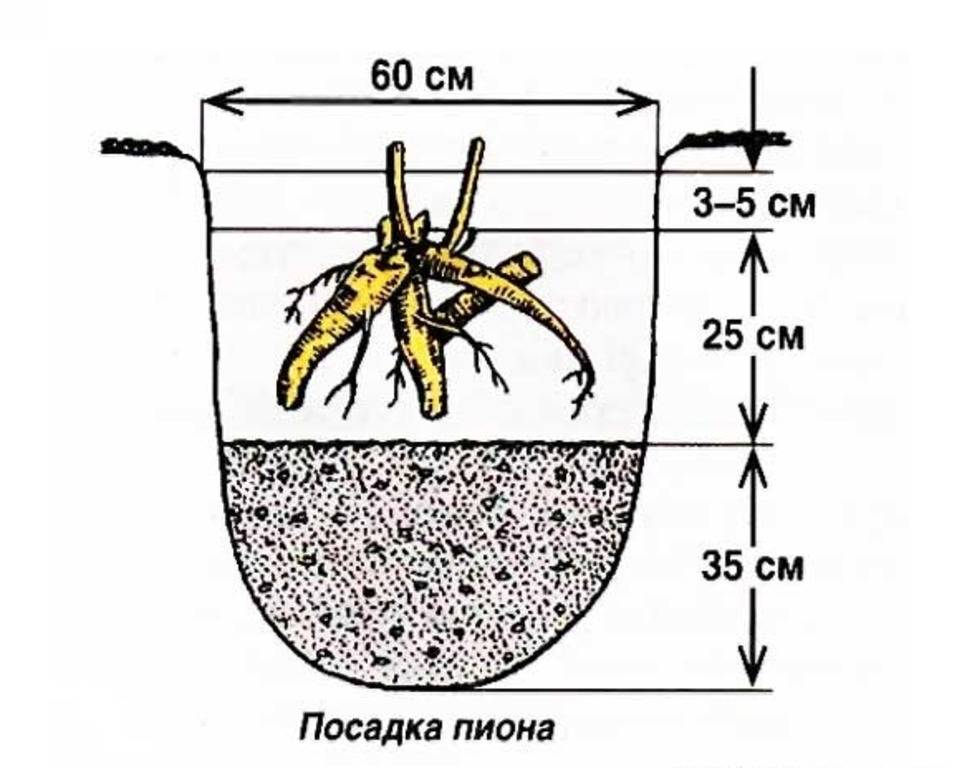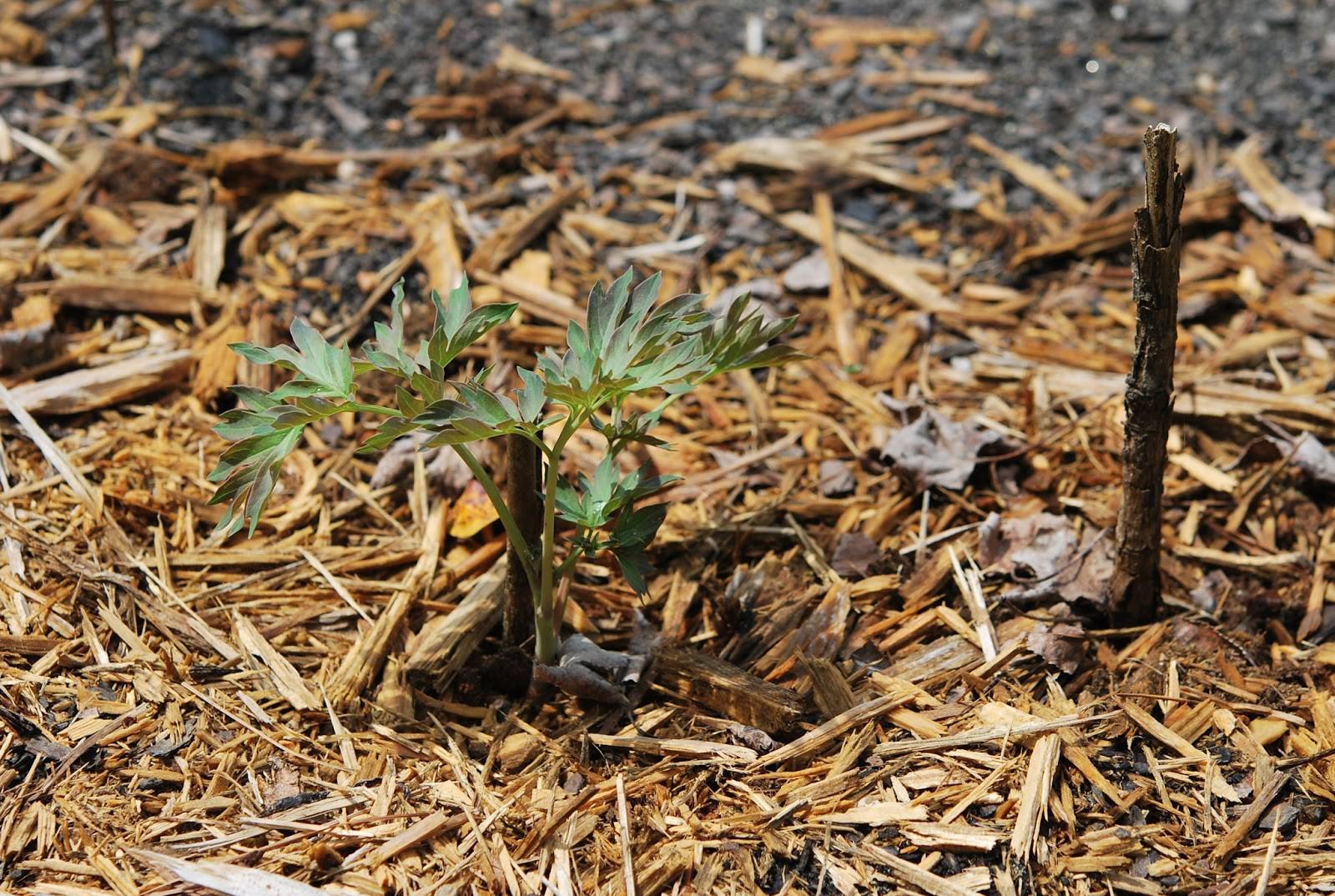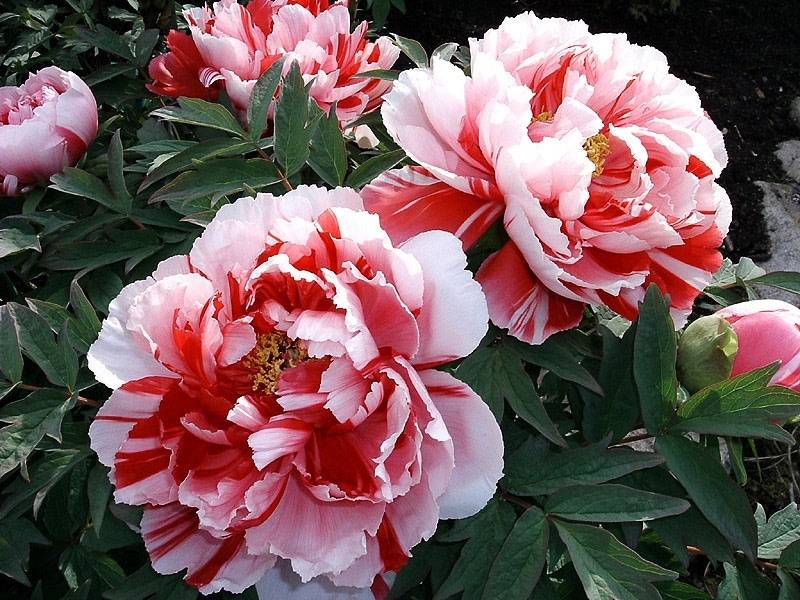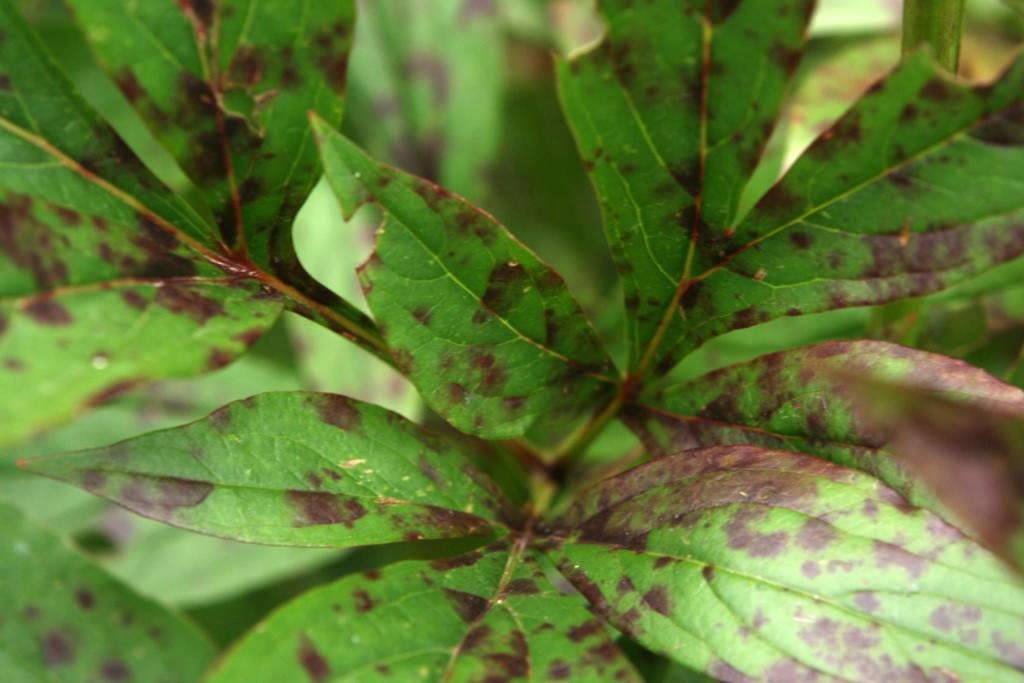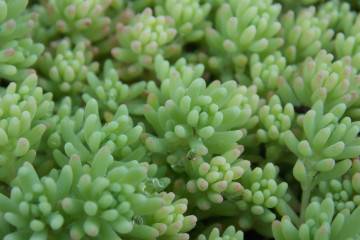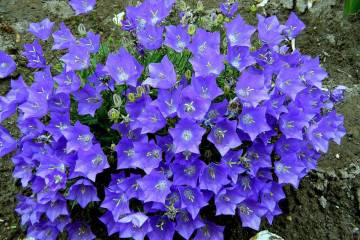Ito-peonies - what is this hybrid species, planting, reproduction and care of hybrids
Content:
There are many varieties of peonies. These lush flowers have long been prized by gardeners. One of the results of the work of breeders was the Ito-peonies.
History and features of Ito-pions
They were bred by the Japanese Toichi Ito in 1948, and the name comes from his surname.
In our time, work on the development of new forms of plants continues, therefore, a whole group of Ito-hybrids (hybrid) has been created, which have a number of advantages:
- frost resistance;
- abundant flowering;
- developed root system;
- the ability of vegetative reproduction.
However, with all the advantages, the Ito hybrid peony has some disadvantages of the conditions of detention:
- does not tolerate heat well (over 25 ° C);
- requires regular watering.
Compositions from Ito-peonies are common in landscape design. Blooming flower beds look lush and attractive, and at rest, the plant serves as a background for other flowers.
The varieties most in demand among gardeners
The popularity of Ito hybrids is due to large and lush flowers with a contrasting base of the buds, a variety of species, a long flowering period and a unique smell.
There are more than 40 varieties of the paeonia genus (lat.peony) in hybrids. The most popular ones are:
- peony Hillary (Hillary) - semi-double variety. Differs in deep pink color with burgundy splashes. The flowering period is 2-4 weeks.
- Border Charm has a lemon scent and produces medium-sized, pale yellow buds with a reddish base. The bush is small and wide. Peony Border Charm is winter-hardy, to the cold its leaves become burgundy.
- Scramdidliapshes. Peony scrumdidleumptious - the owner of double, pale pink flowers with a diameter of 15 cm, towering above the foliage. The flowering period is average - up to 2 weeks. The scrumdidleumshes peony has strong stems and disease resistant foliage.
- Lollipop (Lollipop) has colorful flowers of various shades and leaves of an unusual striped color. The bush is tall and round, with a large number of buds that bloom in May. The aroma is mild, pleasant. Extremely frost-resistant (can withstand up to -35 ° C).
- Yellow Crown. The yellow crown is rare and notable for its unusual appearance. During the season, up to 50 flowers 17 cm in diameter, bright yellow in color bloom on the bush. The bush is small, deep green. Feels better in the sun, blooms up to 5 weeks. Resistant to frost and drought.
- Scarlet Heaven. Rare, beautiful view A lush bush up to 70 cm in height blooms up to 1 month, the buds bloom alternately and have a strong aroma. Resistant to pests and diseases.
- Jubilee produces large, lacy buds (25 cm), which gradually develop into pale white flowers. Leaves of various shapes, light green. The duration of the activity of the variety is short (about 2 weeks). Jubilee requires tying due to its high height - 90-100 cm.
- Garden Treasure. The hue variety is great: white, canary, pink, coral colors. Semi-double buds up to 20 cm have a bright aroma. The height of the stems of the Garden Treasure is up to 120 centimeters, the width of the bush is up to 1.5 meters. Does not tolerate even a short time in the shade.
- Joanna Marlene. Medium-sized, neat variety (60 cm). Unusual, bicolor buds that change from dark peach to gold as they open. Semi-double flowers, 14-20 centimeters. The flowering period is average.
- Watermelon Wine. The rich dark crimson color of the ovary does not leave indifferent collectors. Large, noble, bowl-shaped flowers with translucent petals give a pleasant aroma. The variety is resistant to cold and disease.
- Unique. Another representative of wine peonies. The flowers are simple with pointed two-row petals. They have a faint, pleasant aroma. They do not deteriorate for a long time in the cut.
Florists also appreciate such varieties as Julia Rose, Canary Brilliants, Bartzella, Dark Eyes, Memory Callies.
Growing a flower
Ito-peonies are more difficult to propagate than their herbaceous counterparts. Their roots are quite firm, long, horizontally located, and the seeds are rarely obtained.
Planting by root cuttings
This is the most common method of planting an Ito-peony. A stalk is a small part of a plant root that has a root and a sprout eye. They are harvested from late July to mid-September.
First, the plant must be cleaned of old roots and soil. Then the rhizome is divided into parts 5 cm long, which are soaked in a solution of potassium permanganate for 2 hours for disinfection. After drying, the roots are sprinkled with charcoal and left for 10 hours to form a crust on the slices.
Then you can plant the cuttings in the soil. The depth of the holes is about 5 cm, the distance between them is 20 cm. With proper care, the seedlings grow in two years.
Planting with seeds (for breeding)
For germination, it is necessary to use unripe plant seeds (hard, brown). The seeds are heated with sand to 30 ° C until the bud appears. Disembarkation takes place in the first half of September. The first shoots appear after 3 months.
Boarding time
The favorable time for planting a herbaceous perennial begins at the end of August and lasts all September. The soil should not be frozen so that the peonies can take root before frost.
Location selection
For peonies, choose a place where there are no trees and shrubs nearby. You should not plant a flower in an area with a high probability of flooding with melt and rain water.
The lack of shadow is an important point. Peonies are sun-loving plants, their growth in the shade slows down, the plant begins to ache.
Preparing the soil and flower for planting
The bed for Ito-peonies should be prepared in advance for better compaction and settling of the soil. Its size is from 80 to 100 cm, since hybrids grow rapidly, and the depth of the holes is 60 cm.
Hybrids grow on neutral and slightly alkaline soils. The potting mix should fill the hole 2/3 full. Humus and dolomite flour should be added to it.
Step-by-step planting procedure:
- Prepare a pit and a seedling in advance.
- At the bottom of the pit, a layer of drainage and fertilized soil should be laid by 2/3.
- The soil is moistened just before planting.
- The seedling should be placed at a slight slope so that all buds are at the same level.
- The seedling is covered with earth so that the buds rise 3-5 cm above its layer.
Caring for Ito hybrids
Ito-peonies are extremely hardy plants, so caring for them is not difficult at all.
Watering and feeding
Top dressing of Ito-peonies is carried out in spring and autumn.For this, you can use urea, ash, herbal infusions. Urea granules are scattered on flower beds in early spring. You can sprinkle ash on the plant as soon as the snow melts. In May, you can fertilize the peony with herbal infusion (1: 8), pre-watered with water or after rain.
Watering is especially necessary after flowering. It is important that the soil does not become dry. The formation of future flowers depends on this.
Mulching and loosening
In the fall, for better moisture retention, the peony needs mulching. Any loose material (bark, hay, stones, crushed stone, sawdust) will do. For peonies, it is best to use stones: this will also serve as a decor.
Loosening of the soil must be done carefully so as not to damage the growth buds. Loosening can be deeper at a distance of 10-15 cm from the bush. This action helps to retain moisture and kill weed seedlings. It is necessary to loosen the soil after each heavy rain and abundant watering.
Preventive treatment
Old leaves must be removed and burned to prevent bacteria and pests. After that, the plant is treated with a solution of copper sulfate or phytosporin, and the soil is spilled with a solution of Bordeaux liquid. To prevent harmful insects and diseases from accumulating in the soil, the soil around the bush is dug up.
Blooming hybrid peonies
The flowering time depends on the variety and type of plant. Care and climate are also important factors. Ito-peonies are often semi-double or double. Flowering begins in late May - early June. The flowering period is on average 2-4 weeks.
After flowering and falling of the petals, the bush with feathery leaves remains decorative until autumn, where a dormant period begins.
Care during and after flowering
For proper growth and flowering, it is necessary to remove the first buds, as they weaken the young plant. Water the flowering plant abundantly, but not often. Before the beginning of flowering, fertilizing the plant with nitrogen-containing fertilizers and watering with an ash solution will have a beneficial effect. It is useful to clear the flower bed of weeds and loosen the ground.
In the fall, the stems are cut to ground level. Young plants should be insulated for winter.
What to do if it does not bloom, possible reasons
The reasons that the hybrid does not bloom may be:
- unsuccessful landing site - moisture, shade, small space. In this case, plant transplantation will help;
- disproportion of the bush - a large number of buds and a small root. It is necessary to divide and plant the plant for the growth of the rhizome;
- frequent replanting has depleted the plant. The way to solve this problem would be to define a flower bed and not move for several years;
- acidic soil. It is necessary to change the composition of the soil by liming;
- disease or pests. The use of special chemical or herbal formulations can solve the problem.
Peonies after flowering
Ito hybrids look very impressive after flowering, thanks to their foliage, which begins to wither away only with the onset of sufficiently strong cold weather. At this time, you should do their transplant, pruning, preparation for winter.
Transfer
The root system of Ito-peonies is extensive and grows over the years. It is better to replant 4-5 year old mature plants and plant them once every next 3-4 years. Transplanting is carried out in September, when the plant has bloomed. The upper part of the peony is cut to the root, and the root itself is cut to a length of 10-15 cm at an angle of 45º and divided into parts. After that, you must perform the actions of a normal landing.
Pruning
There is no need to rush to prune healthy foliage, as in the fall the nutrients will reach the roots. Peduncles, dried and withered leaves are cut off in early September.
At the end of November, the remaining leaves are pruned at soil level, while the pruner is kept parallel to the ground. After pruning, the soil is mulched and sprinkled with ash.
Preparing for winter
Ito-peonies, despite their frost resistance, still require a special winter shelter. Otherwise, they will be exposed to freezing of the buds and rhizomes. To insulate the plant, it is necessary to mulch the soil with a height of at least 10 cm. You can cover the peony with rotten manure, grass and leaves. In persistent cold weather, you can use special shelters.
Diseases, pests and ways to control them
Ito-peonies are immune to pests and diseases. But despite this, they can be exposed to the following diseases and attacks of insects:
- aphid settles on the shoots and around the buds of the plant, feeds on its juice and weakens it. You can get rid of it with soapy water;
- bronze. The beetle feeds on the leaves, stem and petals of the plant, preventing it from blooming. Can be overcome with decoctions of tansy, dandelion and wormwood, or by adding special chemicals to the soil;
- ants. Damage to the buds and root system of the plant. You can get rid of it using chemicals, but this can scare off the bees;
- leaf spot. A type of fungus that affects the inside and outside of the leaves. The plant is covered with characteristic spore spots. Removal of infected sheets and treatment of healthy ones with boric liquid will help;
- rust covers leaves with brown spots. Salvation can be the removal of spotted leaves and treatment with Bordeaux solution;
- gray rot. It appears in spring and affects all parts of the plant with mold. It spreads quickly in dampness. It is necessary to shed the bush with a suspension of Thiram and cut off all affected parts of the plant.
Ito peonies are distinguished by the unpredictability of the colors of their flowers and the fantastic options for their combination. Florists appreciate these plants not only for their beauty, but also for their ease of growing.
